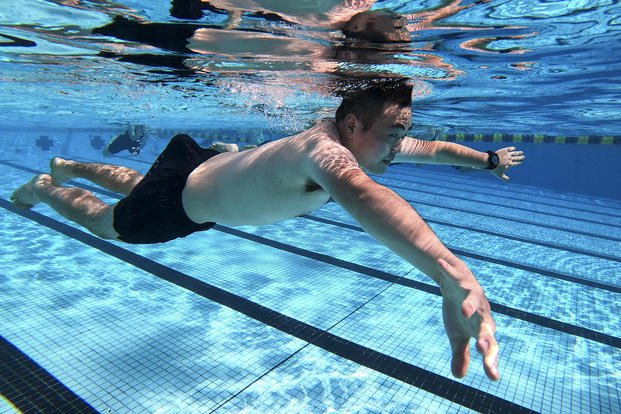One of my number one pieces of advice to people often is not to join the military simply because you have completed high school or junior college or completed your college degree. Join when you are ready.
This means that you should not put an arbitrary date in your head to leave. Make sure that date coincides with you being fully prepared to endure whatever challenges lie ahead of you. You may ask, "How will I know that I am ready?"
Here is a top 10 list of signs to know when you are ready:
1. Reducing weaknesses: You first need to find what your weaknesses are physically. Are you a strength athlete who thinks long-distance running is anything more than 100 yards? Are you an endurance athlete who never has lifted weights or cranked out double-digit pull-ups? Here are Common Weaknesses you may not even know you have.
2. Can you crush the entry fitness test? Getting to any training requires you to pass a fitness test. You can be in the zone of barely passing with the minimum standards, or you can be in the group that maximizes the standards. These tests are a decent predictor of success at tactical training programs in our government.
By striving for the minimum standards, you are setting yourself up for possible failure or incurring overuse injuries. The PT test should just be another workout that you have done so many times in preparation for your future job.
3. Longer workouts: Preparation is not limited to just a PT test. You also have to prepare your body for the specifics of your future training. This may be carrying heavy weight in a backpack or gear. It may require swimming and the water confidence of a marine mammal. And without a doubt, it will require lots of running. There is no 30-minute gym routine that prepares you for a day of military training. You have to put in your time, working out and staying busy the rest of the day.
4. No naps: Long workouts and working the rest of the day is a typical training day for all tactical professions. There are no nap times. Many people who have the time in their schedule will work out for a few hours, eat, take a nap, eat, work out again, eat, maybe take another nap and that is their preparation day.
I am not saying that if you are tired and need a quick nap for recovery to skip it. Just be aware that in the near future, your day will consist of work, working out and more work. Many students with a successful selection program will work out for a few hours, spend the rest of the day in school or working, then work out again before calling it a day. These are more realistic timelines you will have when going through your selection, boot camp or academy.
5. Running foundation: When people say it is a running man's game out there, they are not lying. Most challenging selection programs are based on running and/or rucking. Running is a proven method to see how badly someone wants to succeed and an easy event to mark progress. Are you getting faster? Can you run as long as the instructors tell you to? Are you feeling no overuse pains during and after your run? If you answer yes to these questions, your running foundation is solid. Running Articles
6. Swim skills: Swimming is a survival skill, and we all should know how to do it -- just to save your own life. In many programs, you must be competent enough for night swims and SCUBA dives, long treading sessions and miles of swimming with fins. You also should possess good form for surface and underwater swimming. (Military Swim Skills)
7. Rucking: If you are going Army, Marines or Special Ops, you will be rucking. If you are becoming a police officer or firefighter, your daily gear is heavy as well. Get used to moving quickly while carrying extra weight by adding weight vests to your calisthenics, walking and running workouts. What Is a Ruck?
8. Multiple workouts: Spread through the day, a morning PT and run and an afternoon swim or ruck can be logical ways to fit in a few hours of physical activity. Topping it off with an evening weight-training session and still feeling like you are not overdoing it is a good indicator that you are well-prepared for any challenge. Two-a-Day Workouts
9. Get specific: Make sure the focus of your workouts is on what you will be tested on during your training/selection. That may mean more rucking than swimming or more longer-distance timed runs than upper-body strength requirements. It all depends on your branch of service or job you seek. To and Through Training
10. Recover quickly: In the end, how quickly you recover from tough workouts is a good indicator to determine whether you are ready. Making sure your nutrition, sleep, mobility and workouts are in balance is the key to pursuing recovery and achieving optimal performance. Recovery Tools of the Trade
Stew Smith is a former Navy SEAL and fitness author certified as a Strength and Conditioning Specialist (CSCS) with the National Strength and Conditioning Association. Visit his Fitness eBook store if you're looking to start a workout program to create a healthy lifestyle. Send your fitness questions to stew@stewsmith.com.
Want to Learn More About Military Life?
Whether you're thinking of joining the military, looking for fitness and basic training tips, or keeping up with military life and benefits, Military.com has you covered. Subscribe to Military.com to have military news, updates and resources delivered directly to your inbox.


















